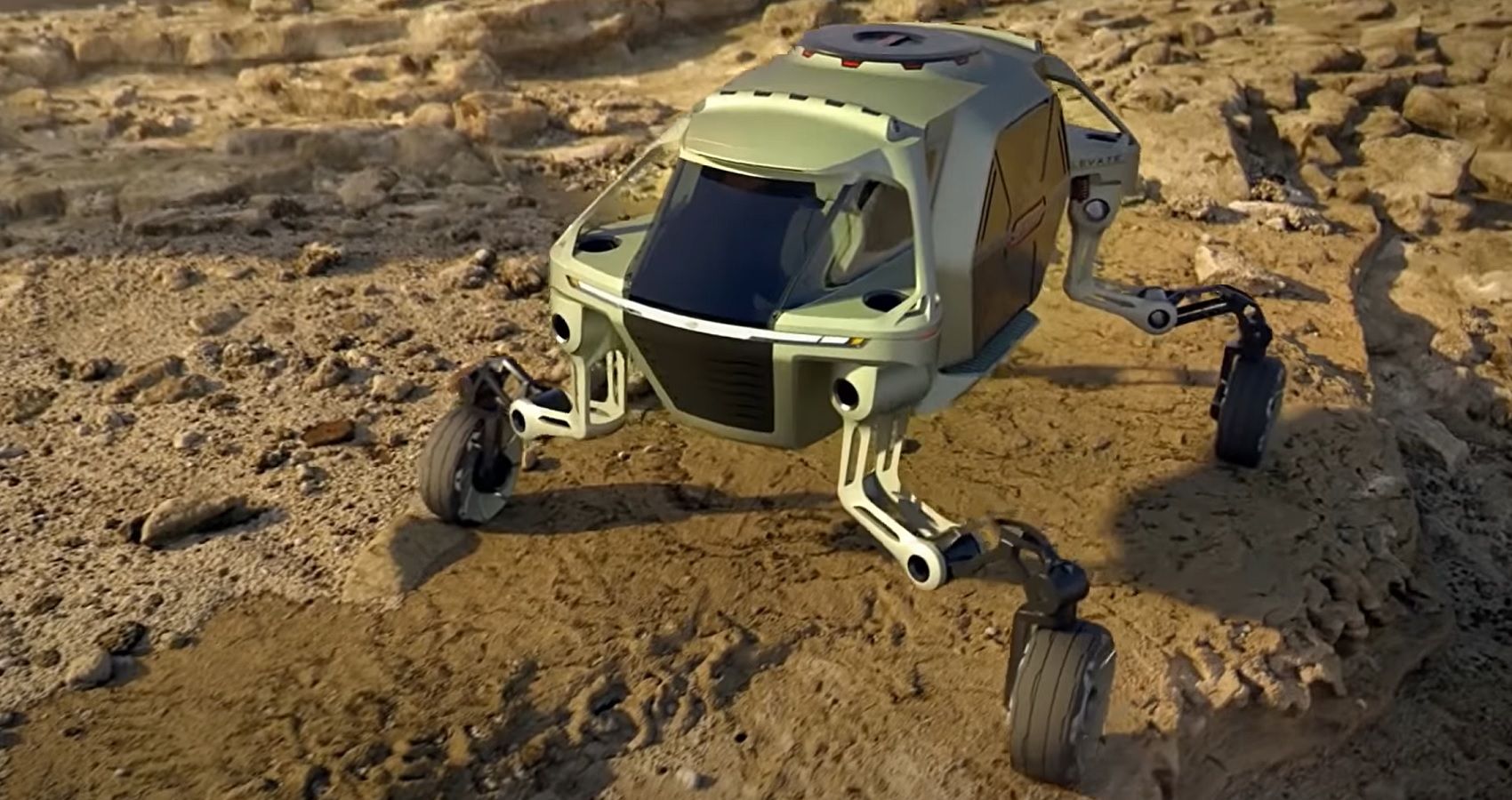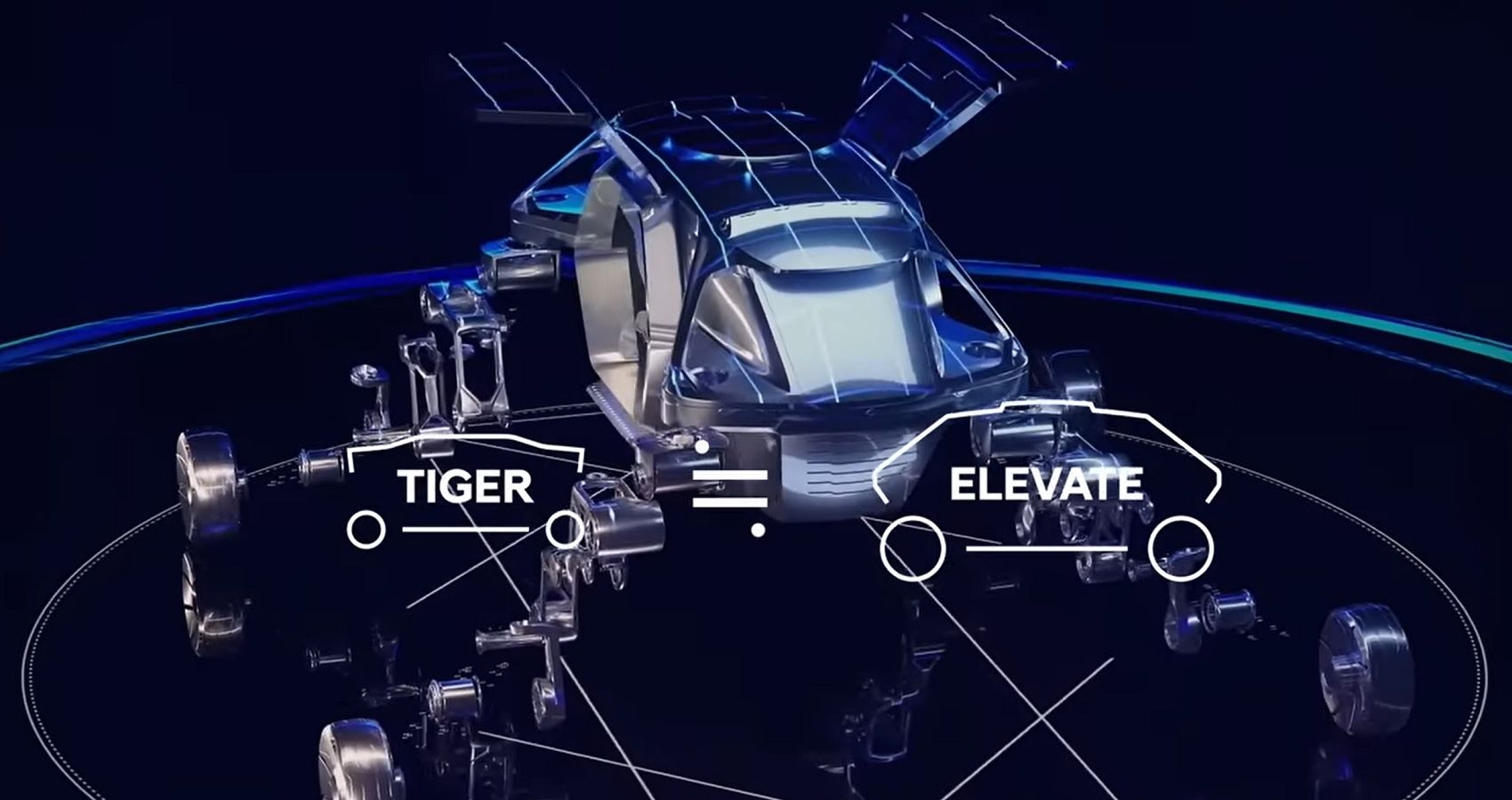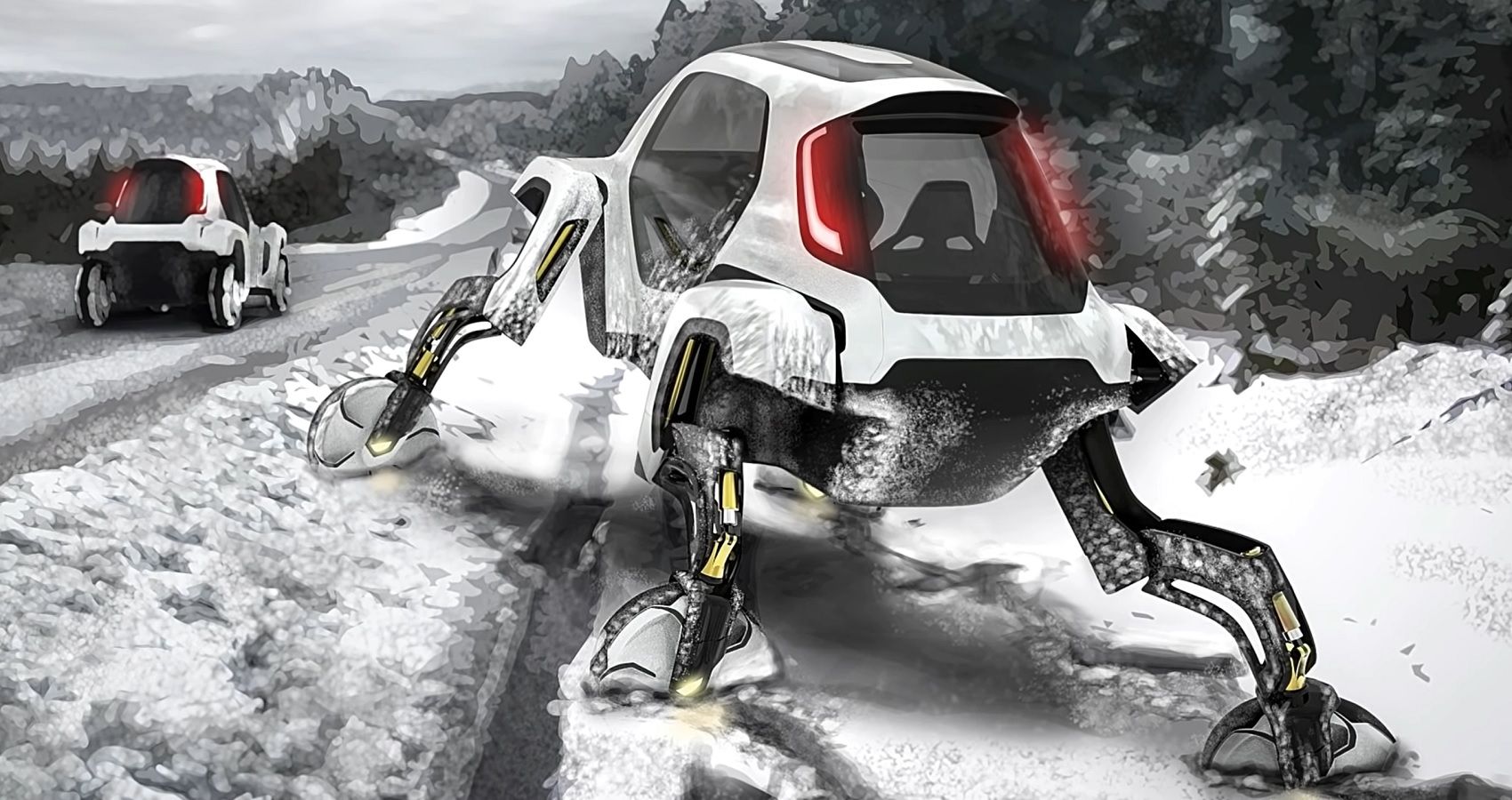In 2019, Hyundai unveiled the Elevate concept car with legs. The CES teaser was like something from a Sci-Fi story, but the prototype pushed it into reality. As many concept cars never advance to the manufacturing stage, Elevate faded out of the news. Four years later, it's making a comeback.
Hyundai will work to get Elevate from concept to production in Bozeman, MT. In May 2022, the company announced the opening of the New Horizons Studios (NHS) R&D Center at MSU's Innovation Campus. The R&D lab's purpose is to design Ultra Mobility Vehicles (UMVs) like the Elevate.
The Hyundai Elevate As A First-Responder Vehicle
Hyundai originally designed Elevate to be a first-responder vehicle. The UMV's robotic legs can climb over uneven terrain inaccessible to non-legged vehicles. This would be especially helpful during natural disasters such as earthquakes. Getting a vehicle to the scene of an accident would allow access to medical equipment and supplies. However, emergency response was not the only utility belonging to Hyundai's UMVs.
The UMV could also help people with disabilities or people who want vehicles with more off-road capabilities. It could offer door-side service to those who have trouble exiting their homes. The legs on the Elevate are not simple. The vehicle has 4 electric wheel-hub propulsion motors to move the legs over many terrain types. Its robotic legs have 5 degrees of freedom, which makes them better able to move over obstacles.
The UMV can move like a standard vehicle or a versatile walking unit because of its wheeled, articulating legs. According to Hyundai, the Elevate is capable of climbing a 5-foot wall or crossing a 5-foot gap. It can also lock its legs into any position. This means it can travel longer distances over smooth territory, efficiently.
Hyundai is extending its plans for UMVs with the TIGER X-1 concept vehicle, a smaller autonomous version of Elevate. The purpose of this concept car is to carry materials, rather than people, to inaccessible locations. It has a symmetric design. This means it doesn't have to turn around to change direction.
"The benefit of having leg-wheel locomotion means that TIGER can keep the payload more level than vehicles with conventional suspensions," said Dr. John Suh, founding director of Hyundai New Horizons Studio.
As TIGER is a smaller unit, Unmanned Aerial Vehicles (UAVs) can pick it up to expand travel possibilities. Essentially, this makes UMVs capable of flight.
"TIGER and Elevate are part of a joint vision from Hyundai Motor Group and New Horizons Studio. This vision will see us shape the future of mobility and bring forward-thinking leadership from all parts of the world," says Suh.
Suh notes future UMVs could be used on the moon or a different planet as well.
New Horizons Studios (NHS) Focuses On UMVs
As an NHS founding director, Suh calls UMVs the first transformer-class vehicle. Suh has been with the Hyundai Motor Group for over a decade. He also led Hyundai's Center for Robotic-Augmented Design in Living Experiences (CRADLE). With his impressive educational and professional background, UMVs have a good chance.
New Horizons Studios in Bozeman, MT, also has the support of Montana State and MSU. Hyundai's $20 million investment in the NHS headquarters is also a welcome job creator. Montana's governor and MSU faculty have expressed their gratitude for the economic and educational opportunities offered by NHS.
The new NHS facility is on MSU's Innovation Campus, where Hyundai will have all the space it needs to research and develop UMVs.
Can Walking Cars Be A Future Of Mobility?
No one knows if walking cars like Elevate will become mainstream or remain a weird and wonderful concept car that never makes it to production. Hyundai seems to be the only automobile company focusing on this new technology. Its R&D results will likely set the pace for others.
In the meantime, walking cars aren't Hyundai's only innovative product. Their bold new wave of electric cars raises the bar among automobiles as well.
The Ioniq 5 EV offers faster speeds, reduced charging times, and better handling. The Ioniq 7 promises a futuristic SUV design and plenty of room for people and cargo. And Hyundai's hybrid vehicles continue to be popular for their appearance and affordability.
Hyundai's company slogan is "New Thinking, New Possibilities." It is certainly opening possibilities in the UMV world, a world that they created. As the current UMV concepts are not in production, there is no release date or projected retail price for the Elevate. However, NHS is a clear signal that Hyundai is serious about taking Elevate all the way. It has gone from a CES novelty to a product with a planned and financed pathway for development.
Elevate could be the answer to many transportation barriers the world has in remote areas. It could also increase response times and improve the outcomes of natural disasters. Whether it helps people with disabilities or rescues trapped humans from the rubble, UMVs are undoubtedly destined to save lives. If they make it to the public, they will also offer endless opportunities for fun and recreation.



